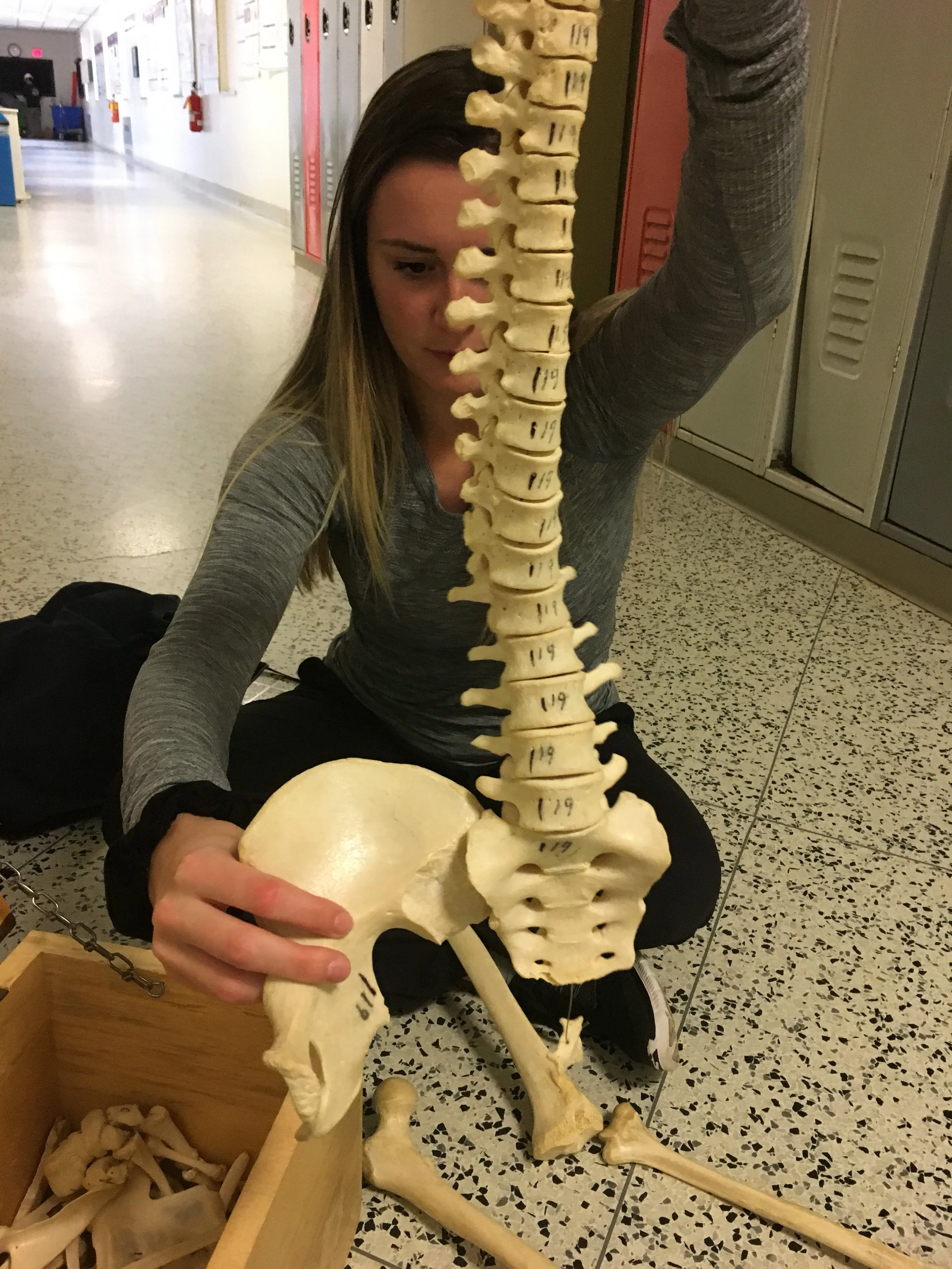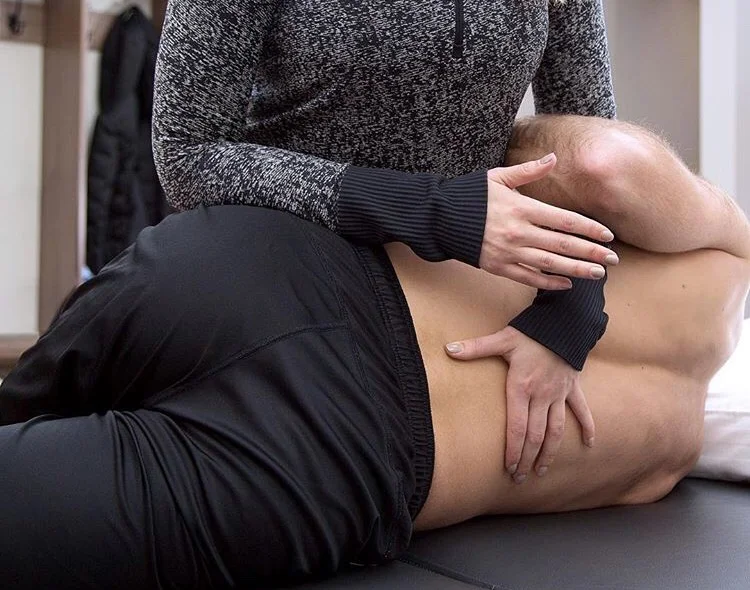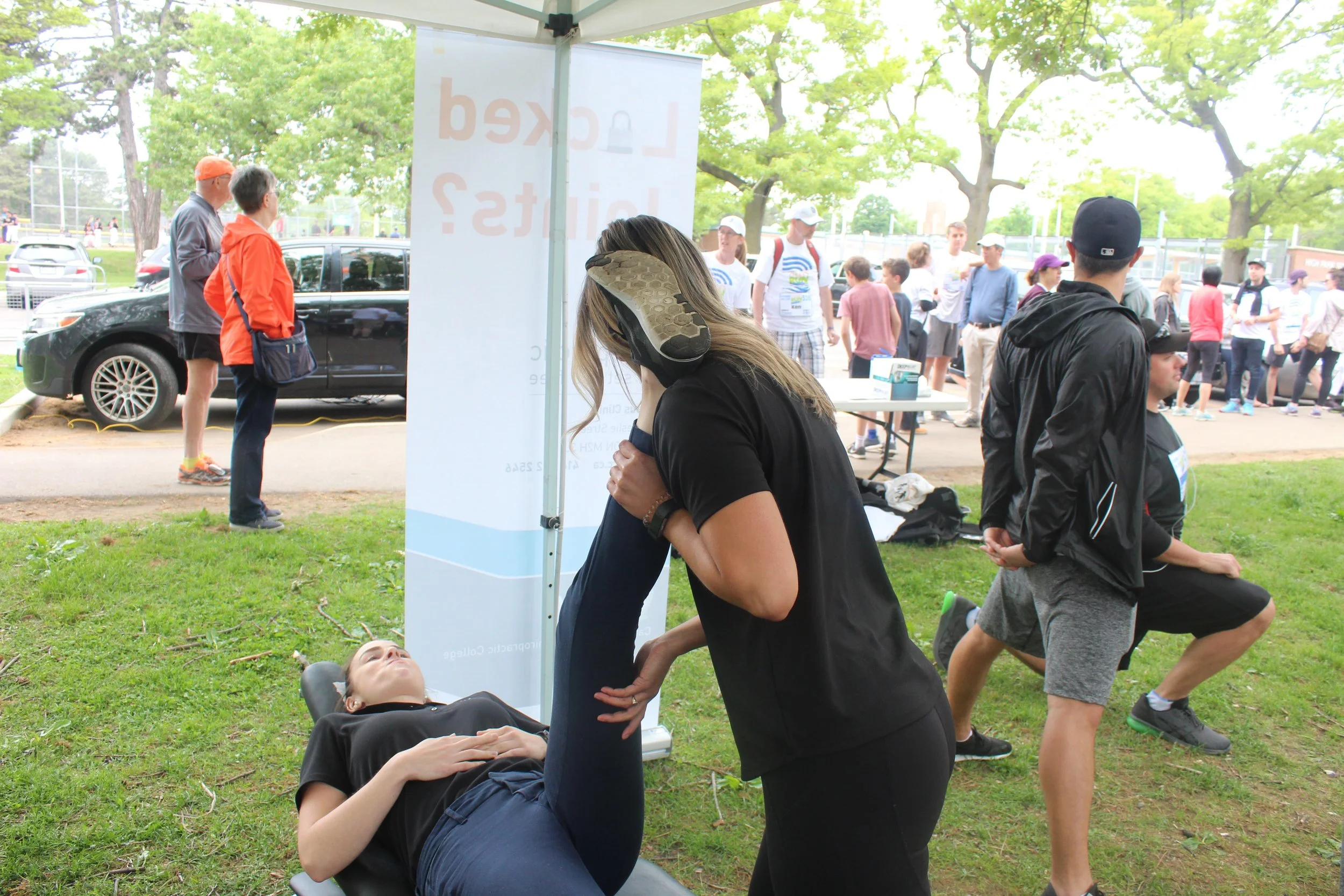Hands that Heal
As a physiotherapist, patients often ask me questions such as "what's the difference between physio and chiro?" or "what do you think about osteopathy?" or "would massage therapy help?" From getting to know other health care professionals in the field I know that fundementally most practitioners all want the same thing- they want to help. Everyone goes into these professions with the intentions of helping others achieve a more pain free, active, healthy lifestyle. Though the principles between professions may slightly differ, at the end of the day allied health professions are filled with dedicated, intelligent, empathetic individuals who arrive on the job each day to help you put your best foot forward. Today, I wanted to highlight a few of these professions and some of the wonderful women who are making a difference in their chosen fields. By understanding a little bit about their education, philosophies and what to expect in treatment hopefully it helps you to understand some of their differences but also I think you will find that maybe we aren't all that different either!
Osteopathy- Melissa Leverre, DSc.O, DOMP
I began my manual therapy career in 2001 as a registered massage therapist (RMT). I enjoyed working in the massage therapy field but I yearned for more information and wanted to be the most effective clinician for my patients. So, in 2008, I applied for and was accepted into the manual osteopathy program at the Canadian College of Osteopathy in Toronto, Ontario. This program is a 5 year in class program with a 1-3 year research component thereafter. In 2016, I successfully defended my thesis to the international jury in Toronto, Ontario and was granted my D.Sc.O, and DOMP.
According to the Ontario Association of Osteopathic Manual Practitioners (OAO), osteopathy is a client-centred discipline that is based on understanding the relationship between structure and function in order to enhance the body’s inherent ability to heal. It relies on skilled manual therapeutic techniques to assess and treat the patient, guiding the natural self-healing properties of the human body.
Osteopathic treatment is based upon 4 tenets or philosophies.
- structure of the body governs it’s function
- the body is a functional unit
- the rule of the artery is absolute
- the body has self healing properties
The primary objective of a manual osteopathic practitioner is to get your body into its best alignment so that it functions optimally. At your initial appointment your DOMP will go through a detailed health history including traumas, surgeries, and accidents. A postural analysis and range of motion testing will be done to see where in space your body sits and it’s ability with motion. You will wear comfortable and loose fitting clothing for the duration of the treatment. A manual osteopathic practitioner includes myofascial release, osteoarticular techniques, visceral manipulation, and craniosacral techniques into their sessions.
Your DOMP will likely suggest home care to assist in your healing as well as any other lifestyle changes which may be of benefit to you.
Osteopathy is a growing field here in Ontario and as such not currently regulated therefore it is extremely important to vet your practitioner as not all programs are alike. To find an osteopathic manual practitioner in your area please click here.
Registered Massage Therapy- Katrina Raney, RMT
What is massage therapy? The definition according to the RMATO is “massage therapy is the manipulation of soft tissues of the body including, muscles, connective tissues, tendons, ligaments and joints. Massage Therapy is a clinically-oriented healthcare option that helps alleviate the discomfort associated with everyday and occupational stresses, muscular over-use and many chronic pain conditions. “
So what does that mean? Well, it means that I help to treat muscles, tendons, ligaments, and joints to be pain free, increase range of motion, and reduce stress. Massage can be used to treat various conditions, and aliments, including lower back pain, chronic headaches, TMJ dysfunction, sciatic nerve pain, and a host of other symptoms. Massage is also very good in reducing stress, and the physical symptoms of anxiety and depression.
As a massage therapist I have completed 2200 hours of school and 2 provincial exams before being able to call myself an RMT. To become an RMT we have to learn all about the body inside and out - every muscle, what action they do, and what bones they attach to. We also learn about the organ systems so that we understand how massage could possibly affect those systems.
Before your first treatment you will need to fill out a health history form. This allows the RMT to see any medical issues or medication you may have, or be taking, and see what your main complaint is for treatment. This has to be done before any massage therapist can treat you.
Will you have to undress? Yes, but you will be under a layer of sheets and blankets, and only the areas that are being treated will be undraped. Having skin to skin contact allows for the RMT to better feel the tissue.
Will it hurt? Depending on what you are coming in to have treated there may be some discomfort or pain. But the main goal of a massage is not to cause pain. There is a “good pain” and a “bad pain”. Don’t be afraid to speak up while you are in the treatment - if you need more pressure, if you need less pressure, or if something hurts.
Massage Therapy is an excellent choice for any muscle, joint or tendon ailment you may have. It also works well in conjunction with chiropractic, physiotherapy or any other body work you may be receiving.
Physiotherapy- Tiffany Laporte, Physiotherapy Resident
Physiotherapists help to improve and/or restore movement functions, optimize movement, relieve pain and treat or prevent physical ailments. Physiotherapy utilizes a combination of exercise, manual therapy and education. Physiotherapists are experts in movement- we help patients understand how and why specific movement and functional patterns can occur. Our goals are to encourage patients to remain active and independent for as long as possible.
What some people may not know is that physiotherapy is a wide-ranging profession. Our schooling is not specific, as we learn all areas of physiotherapy. We are taught to be generalists in school, and the specific training comes afterwards- physiotherapists are always taking courses! It really is life-long learning! After graduation, we are able to work in all areas including: cardiorespiratory, neurological, musculoskeletal, paediatrics, sports and in home/community care physiotherapy.
Physiotherapists must complete a 4-year undergraduate degree prior to entering a 2-year Masters of Physiotherapy program.
The timing of the initial assessments typically vary from 40-minutes to an hour, depending on the clinic. The first half of the assessment usually involves a history taking, which involves a discussion regarding medical history, general health, the course of your condition and your personal goals. It is a good idea to bring any relevant documentation with you regarding your medical history, prescription medication, x-rays, etc.
Following this, the physiotherapist will want to see how you move and may ask you to perform a few movements or exercises so they can assess your mobility. You should wear loose/athletic type clothing.
Your physiotherapist will then outline a treatment plan for you, tailored to your individual needs. The treatment sessions to follow are usually shorter- around 30 minutes or 20 minutes, again, depending on the clinic.
These sessions will most likely be a combination of education, manual therapy (mobilization, manipulation, range of motion or soft tissue release work) and specific exercise.
Chiropractic Care- Taryn Thomas and Meg O'Neill, Students in Chiropractic (Year 3)
There is a lot of overlap between physiotherapy and Chiropractic, and people often ask us what the difference is. Let us tell you about some of the similarities and then about some of the things that make us unique!
Both Doctors of Chiropractic and Physiotherapists treat a large variety of musculoskeletal conditions (pain or dysfunction due to muscles, joints etc.) to help decrease pain/dysfunction, improve strength and mobility and help you return to full function in your everyday life. Both use manual forms of therapy to care for their patients.
The following are a couple of facts to give you a better idea about how Chiropractors are trained, what types of treatment we provide and why Chiropractic is different than other health care practices.
- Chiropractors are also able to provide nutritional, dietary and lifestyle counselling—as this is included in our curriculum.
- After completion of a university undergraduate degree (of at least 3 years), a Doctor of Chiropractic spends another 4 more years at an accredited Chiropractic school. We spend 4,200 hours of specialized clinical training.
- Chiropractors are one of only seven categories of health care professionals in Ontario that are able to use the title “Doctor”.
- Chiropractors are known for being spine experts. We practice a form of manual therapy called spinal manipulative therapy (SMT) AKA adjusting, (we also adjust extremities like ankles, wrists etc.). Adjusting has been shown to correct joint motion and restore proper movement and function. During Chiropractic school we spend 4 years accumulating hundreds of hours of adjusting practice. Chiropractors also practice many other forms of treatment such as mobilizations, soft tissue therapy, rehabilitative exercises, modalities such as acupuncture, laser, IFC and shockwave.
- Chiropractors spend 4 years in school learning how to read and interpret x-rays. Chiropractors in Ontario, Alberta and Newfoundland have the authority to independently order and interpret x-rays for their patients.
- In Canada, at The Canadian Memorial Chiropractic College, we learn a purely evidenced based curriculum, just like that of a physiotherapist enrolled at a university.
Thanks ladies! I know this was super helpful for me and hope it demystifies some treatments for others as well. At the end of the day, I know every profession can be so beneficial and think it is important that we all continue to collaborate and work together!






